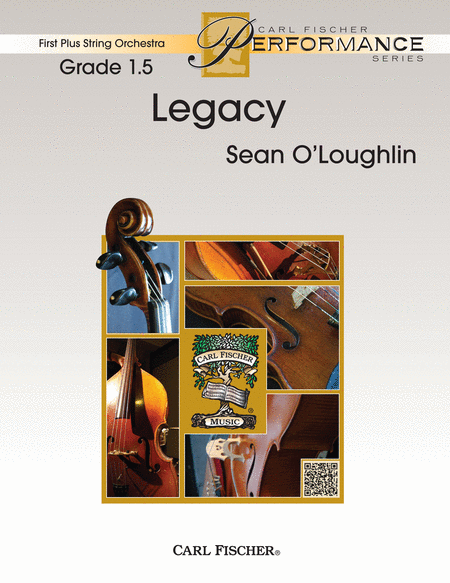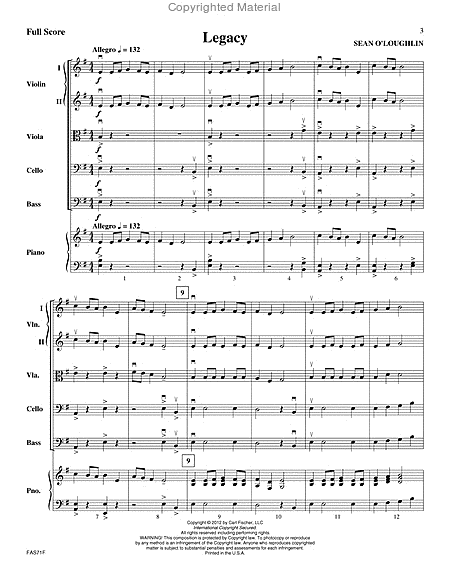Legacy
-
Ships in 1 to 2 weeks
Details
Description
SKU: CF.FAS71
Composed by Sean O'Loughlin. SWS FS. First-Plus String Orchestra (FAS). Set of Score and Parts. With Standard notation. 8+8+8+2+5+5+5+3 pages. Carl Fischer Music #FAS71. Published by Carl Fischer Music (CF.FAS71).ISBN 9780825888908. UPC: 798408088903. 8.5 x 11 inches. Key: E minor.
Composer Sean O'Loughlin has already produced a great deal of exceptional pieces for developing students that will leave a legacy to educators for years to come. Appropriately, Legacy perfectly exemplifies his composing style: forceful, bold, and highly melodic with dramatic musical punches. Sean has such a marvelous way of making these pieces for younger students sound like music written for a more mature group.
A legacy is something people take a lot of pride in, and creating your own legacy can be a very daunting task. A musical legacy comes in all forms: this piece creates one by the use of a dramatic tone that conjures up legendary stories from days gone by.The main melody is stated at the very beginning and sets the tone for the rest of the piece. It should be aggressive and with clear definition. The quarter notes should not be too long, but rather have some lift to them. As the melody repeats at m. 9, more sustained elements get introduced in the celli and basses. A development section takes over at m. 19 by using the same rhythm of the melody, but with slightly different notes. Be mindful of the dynamic contrast throughout this section. Some repetition of the rhythm creates tension at m. 35, building up to a dynamic presentation at m. 47. Here, the celli and basses take over the melody in augmentation while the violins and viola continue with complementary rhythmic figures. A measure of silence at m. 60 creates much anticipation for the return of the melody and a dramatic ending.


 Share
Share